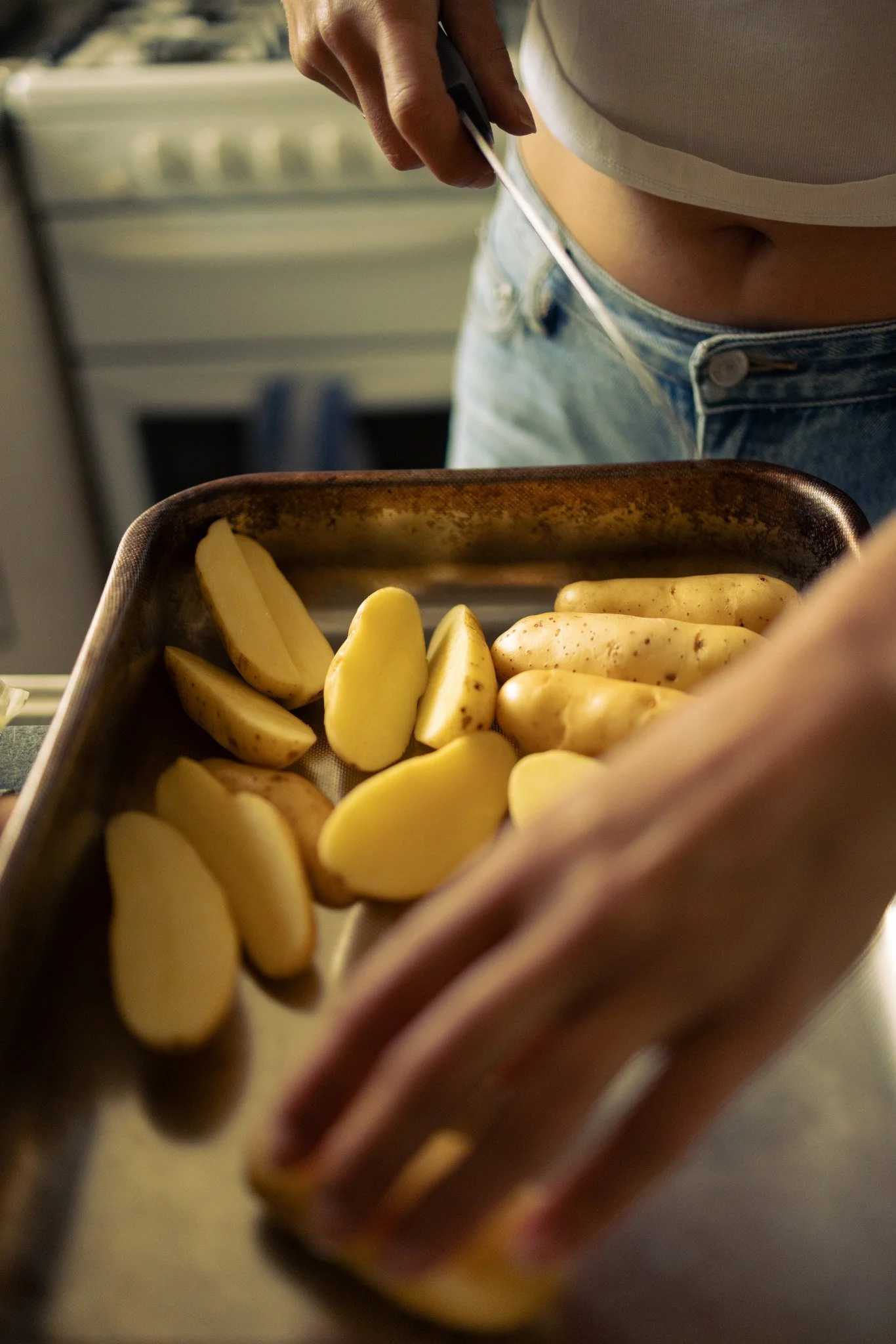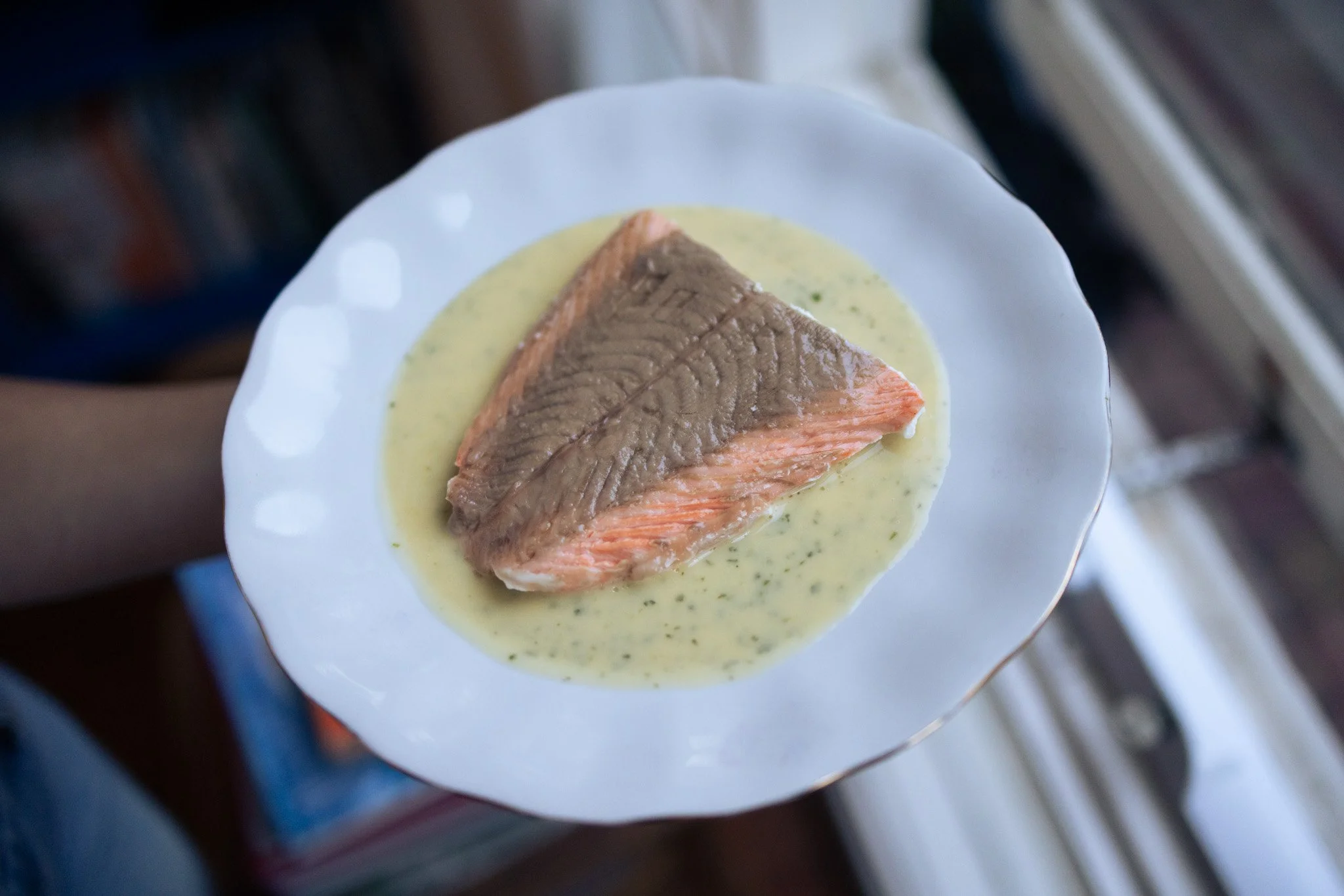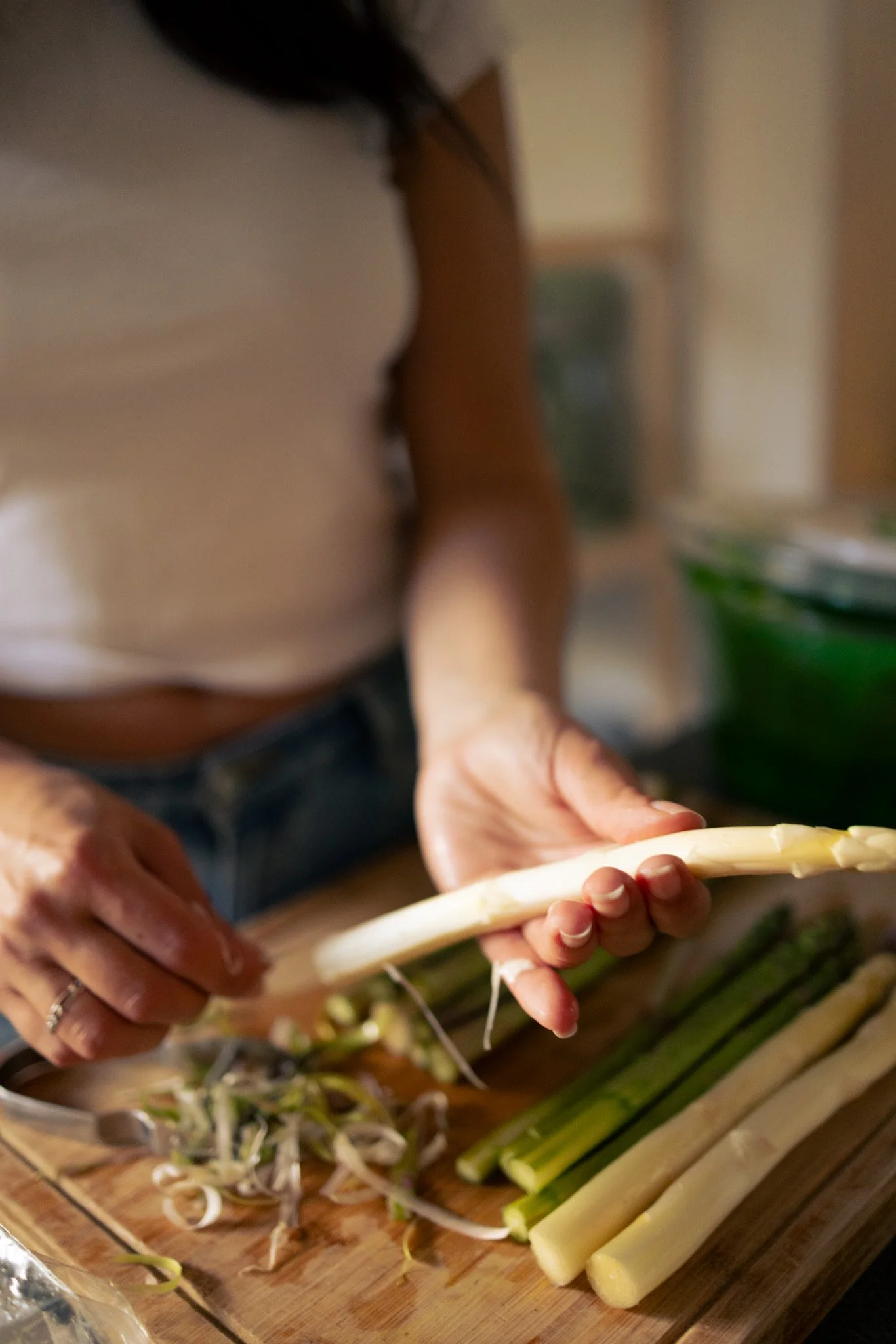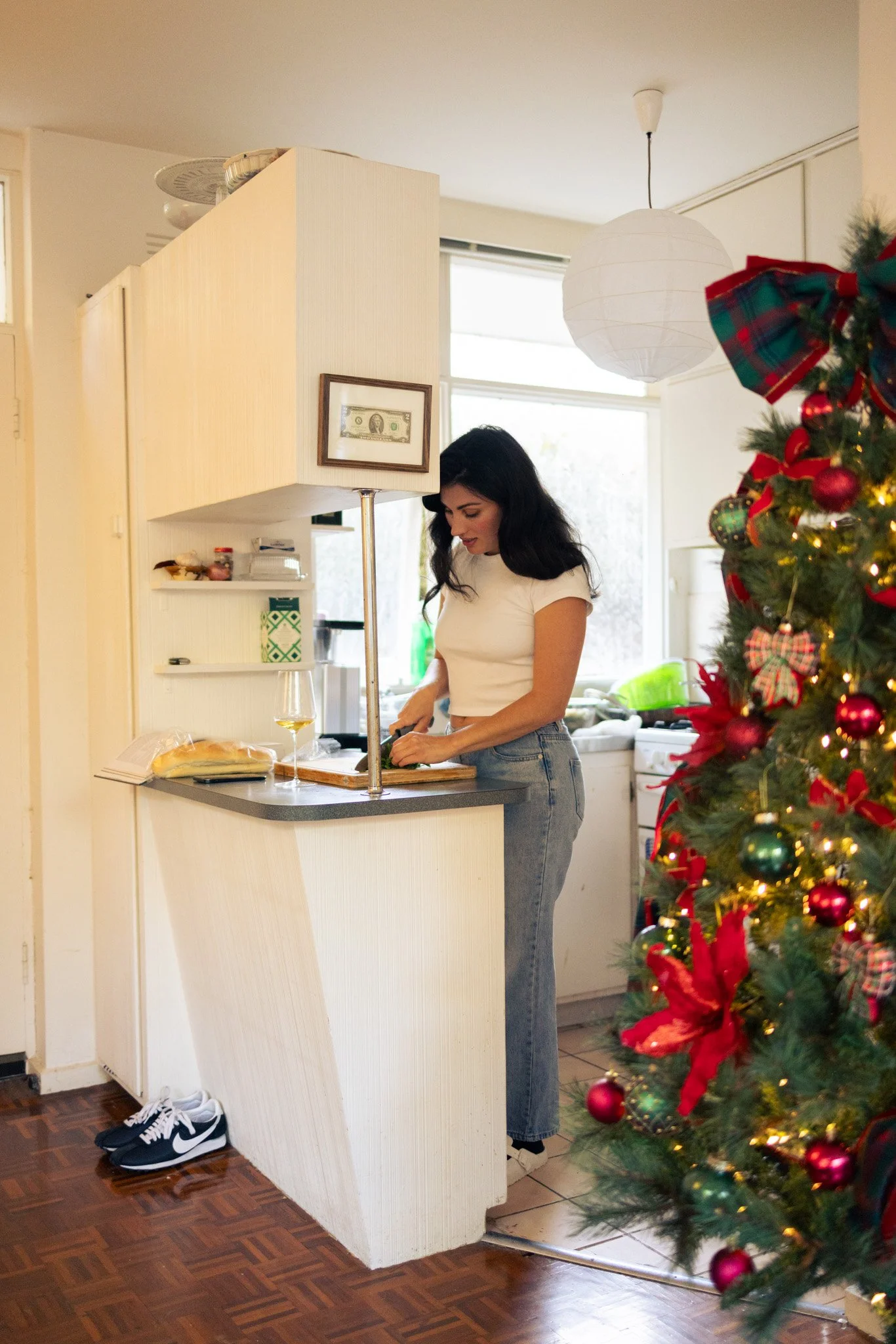beurre blanc sauce w tarragon
A good sauce can change the entirety of a dish. It can take something basic and dull and turn it into something unforgettable. You always hear about the five French mother sauces and how they are the foundation of anything buttery, velvety and adaptable to any protein or vegetable. Add a Parmesan and Gruyère cheese to your Bechamel and you get Mornay or a reduction of vinegar, shallots, tarragon to your Hollandaise and get Béarnaise. But Beurre Blanc is different. It was created after the five mother sauces (Bechamel, Velouté, Espagnole, Hollandaise, Tomato) and is simply a reduction of wine, shallots and vinegar, and loads of butter. There is no flour to thicken it like a velouté or a béchamel sauce.
I love all the mother sauces and everything they offer, but there is something about the simplicity of a beurre blanc and the way it comes together on its own terms. Recently, determined to improve my sauce skills, I joined a French cooking class where I was lucky enough to learn from a chef who once worked alongside Marco Pierre White in London. Watching him move around the kitchen while explaining each step in a thick French accent, his white apron and throwing a tea towel over his shoulder, was like watching a scene set in the eighties, in a hustling kitchen.
My recent travels to Paris also spark memories of beurre blanc sauce. Something about the butter in France is incomparable to anywhere else, and no wonder why everything is so good. Like many other things you tastefully consume in Paris, the bistro sauces left me licking the plate clean. A layer of creamy buttery sauce mixed with any herb, chives, parsley, sorrel or tarragon, and a beautifully poached piece of salmon on top. Sides are always salty french fries, a small mountain of wilted greens and of course buttered white baguette to finish up.
Could it be any more perfect? Here is my take.
Poached salmon tails with beurre blanc and tarragon sauce
Served with seasonal asparagus and roasted potatoes.
Cooking notes* Because the sauce is decadent and full of flavour, I have kept all sides simple to balance out the meal. And Salmon tails because they are half the price and I love that they resemble more of a fish on your plate.
KIPFLER POTATOES
Nothing overly special here, but crucial nonetheless, these are just some good old-fashioned roasted potatoes to sub in for the French fries.
6 to 8 Kipfler potatoes, sliced in half lengthways
Lots of olive oil
Salt and pepper
Preheat the oven to 180 to 200°C. I can never quite tell with my oven, so I start off high and once they begin to brown and go crispy, I turn the oven down a bit. Roast for about 45 minutes.
BEURRE BLANC
This recipe is adapted from my French cooking class I attend.
250 ml white wine
3 tablespoons white wine vinegar
3 French shallots, sliced
5 white peppercorns
2 tablespoon cream
200 g cold unsalted butter
Squeeze of lemon juice
Half a bunch of tarragon, leaves picked and finely chopped
Use a small-ish saucepan and place your shallots, wine, vinegar and peppercorns over medium heat. Reduce the liquid (more than you think) until it becomes a syrup just overing the shallots.
Stir in the cream, then slowly add the cold butter. You will see the sauce come together. Season with salt and a squeeze of lemon. You can test if the sauce is ready by doing the finger-swipe test on the back of a spoon. If the lines of the sauce do not bleed, it is ready.
Strain through a fine mesh sieve into a warm bowl, then stir in the tarragon. Makes about half a cup.
SALMON TAILS
2 ethically sourced salmon tails
1 lemon, sliced
2 spring onions, halved
A small amount of parsley
1 cup water or fish stock
In a wide saucepan, place your lemon, onions and parsley with the water. Bring to a gentle simmer and season with salt. Lay your salmon tails skin-side down, half submerged in the poaching liquid. Place a lid on top and let them poach for 8 to 12 minutes depending on the thickness of the fish.
Once cooked through, gently peel the salmon skin off, ready for serving.
ASPARAGUS
If in season, treat yourself to some white asparagus. They are softer in flavour and look gorgeous on a plate. Fun fact: they are grown fully under the soil, unlike green asparagus which grows above the ground, so the lack of sunlight keeps them white!
A bunch of asparagus (white and green)
Drizzle of olive oil
Flaky Salt
Squeeze of Lemon
Bring a pot of salted water to the boil. Clean your asparagus by chopping off the tough ends and peeling any woody sections. Drop the asparagus into the water and cook until a knife can pass through, about 5 to 6 minutes depending on the thickness.
Serve on a plate drizzled with olive oil, lemon and flaky salt.
Plating Up
Put your potatoes in the oven first. Make your sauce and keep it warm on the stove. Have your pot of salty boiling water ready for your asparagus, and work around the timing of your potatoes finishing roasting. Once they are about ten minutes away from that perfect golden crunch, place your salmon in the poaching liquid, and not long after, add your asparagus. It should all come together at the same time.
Spoon a generous amount of beurre blanc onto a warm serving plate first, followed by your salmon. Serve the potatoes and asparagus on side plates, along with your white baguette and butter of course.
Wine on the table: Sette 'Medusa' Vino Bianco 2023
Listening to: St Germain, Tourist
Images & videos: Pardu by Nic Williams



